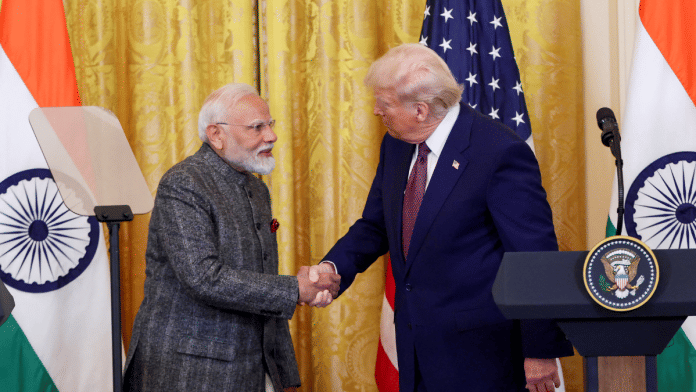India and the United States are reportedly close to finalising a long-pending trade agreement that would substantially reduce tariffs—from around 50 per cent to 15-16 per cent. While this could mark a new phase in bilateral relations and align with India’s strategic rebalancing in energy and technology, the proposed tariff cuts also raise doubts about their potential impact on India’s farm and dairy sectors.
The lure of market access
At first glance, the deal’s logic seems unassailable. India seeks deeper integration with the US economy, diversification away from Russian energy dependence, and enhanced access for its pharmaceuticals, textiles, and IT services. The US, in turn, is eager to open India’s vast consumer market to its agricultural exports and energy products.
Such trade realignments are part of global shifts accelerated by geopolitics. Yet, trade openings can have unintended effects, especially for small producers who cannot compete with subsidised imports.
The agriculture question
India may reportedly permit larger imports of non-genetically modified US corn and soymeal. That small detail is revealing. Access to agricultural market rarely stops at one segment. Pressure could mount to open other sectors. Notably, US poultry and edible oil producers enjoy large-scale, mechanised operations while its dairy sector receives massive subsidies.
India’s 100 million smallholder farmers operate on less than two hectares on average. Their cost structures, productivity levels, and risk buffers cannot match the industrial scale of US agribusiness. In my 22 years at the World Trade Organization (WTO), I witnessed time and again how agricultural liberalisation—if not carefully calibrated—can devastate livelihoods. From Latin America to Southeast Asia, tariff reductions without domestic safeguards have led to import surges, falling farm-gate prices, and rural distress.
Also read: Only below-the-radar diplomacy can work in India-US trade ties now
The dairy dilemma
India’s dairy sector, the world’s largest, is built on cooperative models that empower millions of women in rural areas. Allowing even limited entry to cheap US dairy imports—produced with high-yielding breeds and subsidised feed—could undercut these fragile value chains. Beyond economics lies a cultural dimension: Most US dairy uses animal-derived rennet, which many Indian consumers find unacceptable.
A sound liberalisation framework must ensure that incomes aren’t hit and consumer trust in domestic food systems remains intact.
Safeguards and sensible sequencing
If this deal proceeds, it must be accompanied by robust safeguards—both at the domestic and WTO levels. India will need to retain the ability to reimpose tariffs temporarily if import volumes rise sharply beyond a reasonable threshold. Products such as dairy, maize, and soymeal should be subject to clearly defined import quotas, ensuring that domestic markets are not suddenly flooded.
Tariff reductions must also be linked to verifiable non-GMO and traceability standards to protect consumer confidence. At the same time, India should establish an adjustment fund to help farmers transition to a more open trade environment. Most importantly, negotiators must ensure that the country’s right to invoke “special and differential treatment” under the WTO’s Agreement on Agriculture remains intact, so that future policy interventions remain possible.
Also read: In China, Ashley Tellis’ arrest is proof that US-India trust was always fragile
A deal for the people
Trade agreements are not merely about tariffs—they shape livelihoods, sustainability, and social contracts. The India–US partnership is indeed vital, and should therefore be designed to safeguard the interests of domestic producers.
This deal could become a model for inclusive trade by balancing openness with protection and competitiveness with compassion. It must not overlook the structural asymmetries between the Indian smallholder and the American agribusiness.
India’s challenge, therefore, is to negotiate not just a trade deal, but a development deal—one that protects the livelihood of its farmers while embracing the opportunities of a globalised world.
The writer is a former IAS officer who served at the World Trade Organization for 22 years and is currently President of the Chintan Research Foundation. Views are personal.
(Edited by Theres Sudeep)







India-US trade deal should be a model of 100% free-market capitalism.